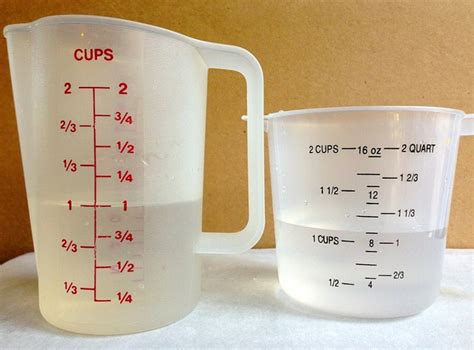How Much Is 2 3 Cup In Ounces
Kalali
Mar 30, 2025 · 4 min read

Table of Contents
How Much is 2 3/4 Cups in Ounces? A Comprehensive Guide
Converting cups to ounces is a common task in baking, cooking, and even everyday life. Understanding this conversion is crucial for accurate measurements and achieving consistent results in your recipes. This comprehensive guide will delve into the conversion of 2 ¾ cups to ounces, explaining the process, providing various scenarios, and exploring related conversion topics to solidify your understanding.
Understanding the Basics: Cups and Ounces
Before diving into the specific conversion of 2 ¾ cups, let's establish the fundamental relationship between cups and ounces. The conversion depends on what you're measuring: liquid or dry ingredients.
Liquid Ounces vs. Dry Ounces
This is a critical distinction! While both are measured in ounces, the volume they represent differs. A liquid ounce measures the volume of a liquid, while a dry ounce measures the weight of a dry ingredient. The conversion factor varies significantly.
-
Liquid Ounces: One US customary cup contains 8 fluid ounces. This is the most common conversion used in recipes.
-
Dry Ounces: The weight of a cup of a dry ingredient, such as flour or sugar, can vary significantly depending on the ingredient's density and how tightly it's packed. There's no single, universally applicable conversion factor for dry ounces to cups. Recipes often provide weights (e.g., in grams or ounces) for dry ingredients for greater accuracy.
Converting 2 ¾ Cups to Liquid Ounces
Since many recipes use liquid measurements, we'll focus on the conversion of 2 ¾ cups to liquid ounces. Given that 1 cup equals 8 fluid ounces, the calculation is straightforward:
-
Convert the fraction: ¾ cup is equivalent to 0.75 cups.
-
Total cups: 2 cups + 0.75 cups = 2.75 cups
-
Conversion: 2.75 cups * 8 fluid ounces/cup = 22 fluid ounces
Therefore, 2 ¾ cups is equal to 22 fluid ounces.
Practical Applications and Scenarios
This conversion is useful in various situations:
-
Baking: Precise measurements are crucial in baking. Converting cup measurements to ounces ensures accuracy when your recipe requires a specific weight or volume.
-
Cooking: While less critical than baking, accurate measurements can enhance the outcome of many recipes. Knowing the ounce equivalent helps with scaling recipes up or down.
-
Comparing Prices: When purchasing liquids in bulk, you may want to compare prices per ounce to determine the best value. This is especially helpful with larger containers.
-
Understanding Nutrition Labels: Nutrition labels often list serving sizes in ounces or milliliters. Knowing the equivalent in cups allows for easier portion control.
Beyond the Basics: Dealing with Dry Ingredients
As mentioned, converting dry ingredients from cups to ounces is more complex. The density of dry ingredients varies greatly. For instance, a cup of flour will weigh less than a cup of sugar.
Factors Affecting Dry Ingredient Weight:
-
Ingredient Type: Different ingredients, like flour, sugar, and nuts, have different densities.
-
Packing Method: How tightly you pack the ingredient into the cup affects the weight. Spooning versus scooping, for example, will result in different weights.
-
Ingredient Moisture: The moisture content of an ingredient will impact its weight.
Instead of relying on a fixed conversion factor, it's generally recommended to use a kitchen scale when measuring dry ingredients for the most accurate results. Many recipes now include weights alongside volume measurements to account for these variations.
Related Conversions and Helpful Tips
Understanding the conversion between cups and ounces is a stepping stone to mastering other volume conversions in cooking and baking.
Other Common Conversions:
-
Cups to milliliters (ml): 1 cup ≈ 236.6 ml. This is useful when following recipes with metric measurements.
-
Ounces to grams (g): 1 fluid ounce ≈ 29.57 ml. 1 ounce (weight) ≈ 28.35 grams.
-
Cups to pints and quarts: 2 cups = 1 pint; 4 cups = 1 quart. This helps when scaling recipes and working with larger quantities.
Helpful Tips for Accurate Measurements:
-
Use measuring cups and spoons appropriately: Use liquid measuring cups for liquids and dry measuring cups for dry ingredients. Level off dry ingredients with a straight edge.
-
Invest in a kitchen scale: A kitchen scale provides the most accurate measurements for both dry and liquid ingredients.
-
Consider ingredient density: Be aware that the weight of a cup of a dry ingredient can change based on packing method and ingredient type.
-
Read recipes carefully: Pay attention to the units of measurement specified in a recipe and use the appropriate tools and techniques.
Conclusion: Mastering Cup to Ounce Conversions
Converting 2 ¾ cups to 22 fluid ounces is a fundamental conversion for anyone who cooks or bakes. While the conversion for liquids is straightforward, understanding the complexities of converting dry ingredients requires careful attention to density and packing methods. Using a kitchen scale for dry ingredients ensures accuracy and consistency in your results. Mastering these conversions not only improves the outcome of your recipes but also enhances your overall culinary skills. Remember to always pay close attention to the specifics of the recipe to ensure your measurements are appropriate for the ingredients being used. By combining accurate measurement techniques with a good understanding of these conversions, you can confidently tackle any recipe.
Latest Posts
Latest Posts
-
What Is 8 20 As A Percentage
Apr 01, 2025
-
40 Is 80 Percent Of What Number
Apr 01, 2025
-
48 Of 60 Is What Percent
Apr 01, 2025
-
How Many Gallons Is 7 Litres
Apr 01, 2025
-
160 Degrees Celsius Is What In Fahrenheit
Apr 01, 2025
Related Post
Thank you for visiting our website which covers about How Much Is 2 3 Cup In Ounces . We hope the information provided has been useful to you. Feel free to contact us if you have any questions or need further assistance. See you next time and don't miss to bookmark.
